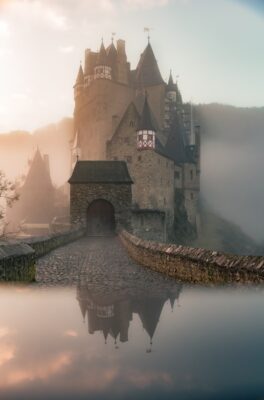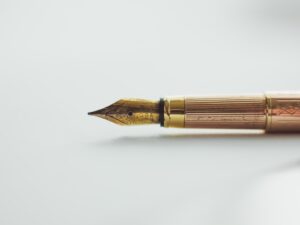 Shakespeare himself could have done a bit of background research while writing his play, Julius Caesar.
Shakespeare himself could have done a bit of background research while writing his play, Julius Caesar.
How’s that?
In Act 2, Scene 1 of Julius Caesar, there’s a famous example of an anachronism. Brutus and Cassius discuss a mechanical clock:
Brutus: “Peace! Count the clock.”
Cassius: “The clock has stricken three.”
But guess what? The mechanical clock had yet to be invented. Shakespeare refers to the sound of tower bells, something absent in Caesar’s Rome.
Readers of historical fiction expect accuracy, although they will forgive you the occasional creative license.
Let’s assume you’ve chosen both your time-period and location. And you hope to avoid embarrassing anachronisms in details related to everyday life.
What do you need to know to avoid making errors in your story, to dispense with the possibilities of creating two other types of anachronisms: parachronism and prochronism? (Both deal with errors in chronology.)
In describing the daily life of your characters, as well as the time and place in which they live, you will no doubt feel overwhelmed at first, especially if the time period and the location aren’t all that familiar to you. Being in such a position can be both exciting―just think of what you’ll learn!―but, frankly, also scary.
The following 4 tips just hint at the iceberg you’ll notice once you begin serious research.
 4 Tips to Get You Started:
4 Tips to Get You Started:
- Check if there’s a Wikipedia article on the time and place you’re writing about. Even if you know a lot about the topic, Wikipedia offers a good starting place for many subjects. And the bibliographical references at the end of various articles might offer a few twigs and branches to hang onto as you explore your subject. Note that it’s best not to rely too much on Wikipedia as the sole source for research.
- Search for secondary sources, or interpretations of the past written by people who’ve – hopefully – studied primary sources, that is, the diaries, letters, journals, or newspapers dating to the period you’re interested in. Bibliographies in the back of secondary sources often provide citations for primary sources. Keep an eye out for library-generated research guides on sites such as this one, an example of the guides created by librarians to help patrons in their research. Most university libraries include similar guides on their sites.
- Take advantage of free online sources such as the Library of Congress Digital Collection, The British Library, Internet Archive, and Project Gutenberg. Much of the material available from these sites takes the form of primary sources. One good thing about most primary source material on these sites, and in books published before 1925, is that you’re free to use that material without asking for permission or worrying about copyright infringement. Check out the Harvard Library site for ways to access primary sources.
- Details about daily life―food, speech, clothing, furniture, travel, medicine, sleep, love, etc.―are crucial in historical novels. Artworks and photographs may sometimes provide answers to questions about daily life. Bibliographies compiled about single subjects, such as the one at the end of this piece from the Metropolitan Museum in New York City, supply writers with much-needed details. Here’s yet another, on children’s clothing, from Oxford Bibliographies.
 Interested in more of the Bard’s historical anachronisms? Take a look and take heart.
Interested in more of the Bard’s historical anachronisms? Take a look and take heart.
Even Shakespeare got it wrong sometimes. But that doesn’t mean you have to, what with all the information you might need being just a click away. Okay, maybe more than one click, but you know what I mean. The internet obviously provides an almost infinite supply of information. However, books still add much to any research you’re doing.
For a quick immersion in the writing of historical novels, the following may be of interest:
“My Go-to Writing Books for Historical Fiction,” by Deborah Swift
“Best Books on Writing and Editing Historical Fiction,” Goodreads
[Editor’s note: WAG would love to see articles on any and all topics of interest to writers. Please send your ideas or finished pieces to Cynthia D. Bertelsen at BlogEditor@writersalliance.org for consideration. Remember: these posts are more than just posts, for they are actual articles and can be cited in your CV/résumé in the same way you would a short story, essay, or any other writing credit you may possess.]

Jenny Dearinger
A great reminder to all writers! Thanks so much, Cindy!
Cynthia D. Bertelsen
Yes, sometimes it can be embarrassing!
Mary Bast
Fascinating!
Cynthia D. Bertelsen
Thanks, Mary.
Penny P Church-Pupke
Resources all writers should be aware of. Wonderful information!
Cynthia D. Bertelsen
Thanks, Penny. Yes, most writers could benefit from many of these resources.
Joan Carter
I’m sending a link to this post to my daughter, who’s writing bios for ancestors in the family tree on WikiTree.com, a site whose genealogists strive for documentation from good sources.
Cynthia D. Bertelsen
That sounds like she’s doing something really fascinating. Thanks for sharing, Joan.